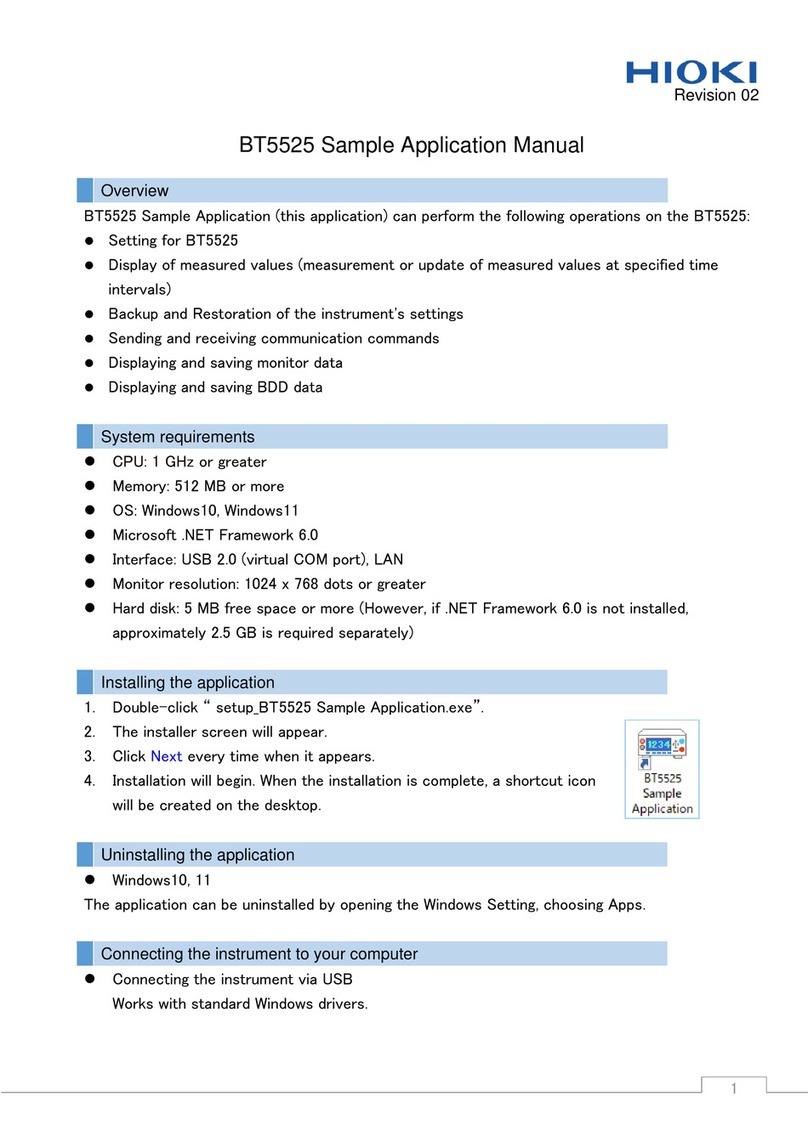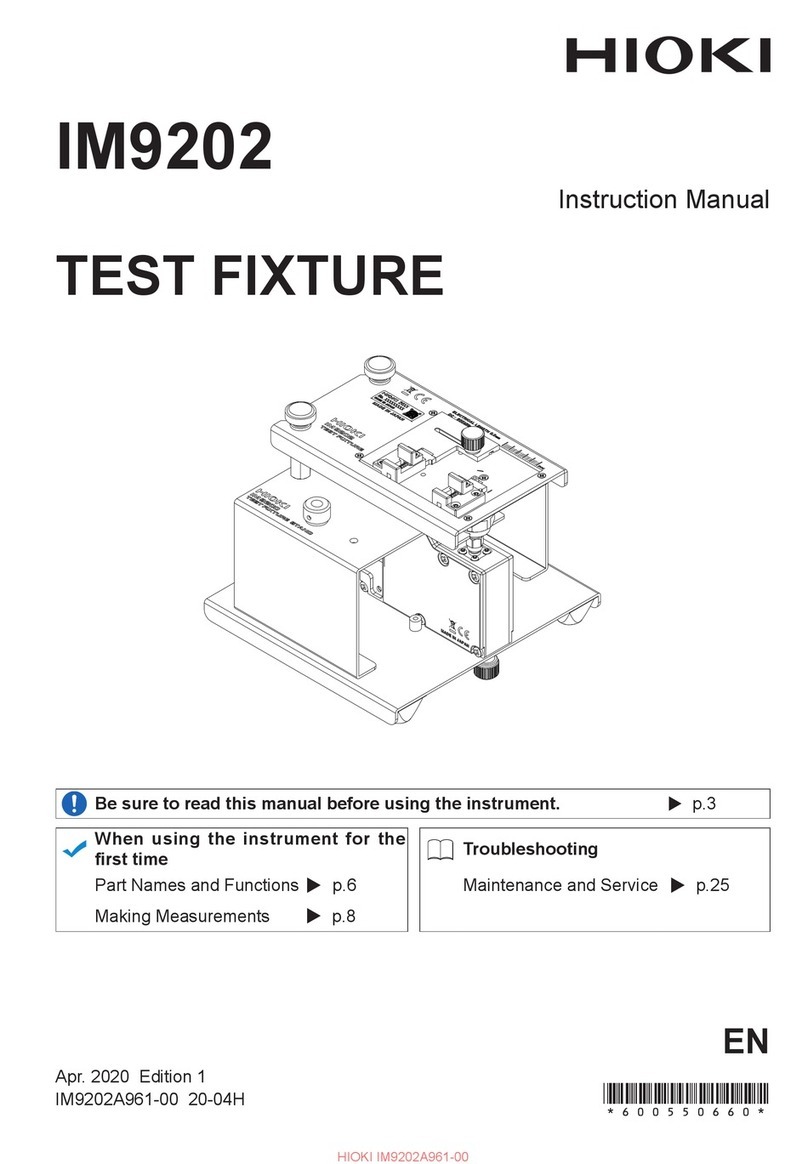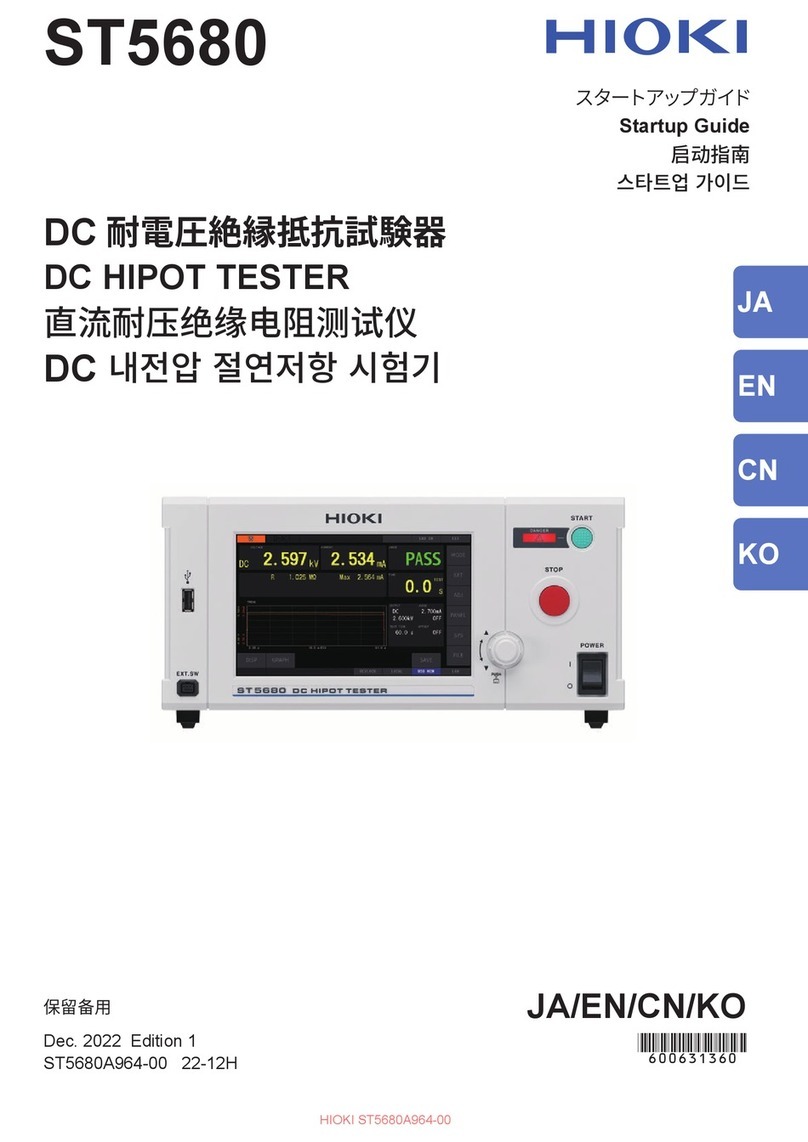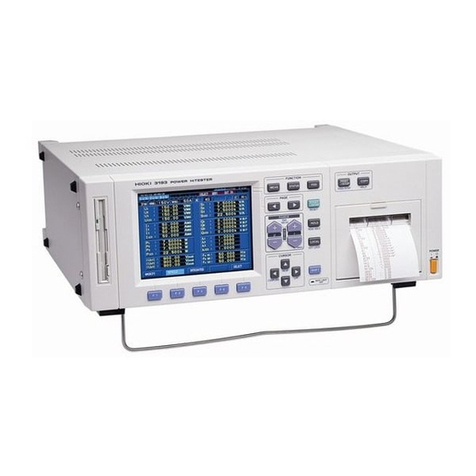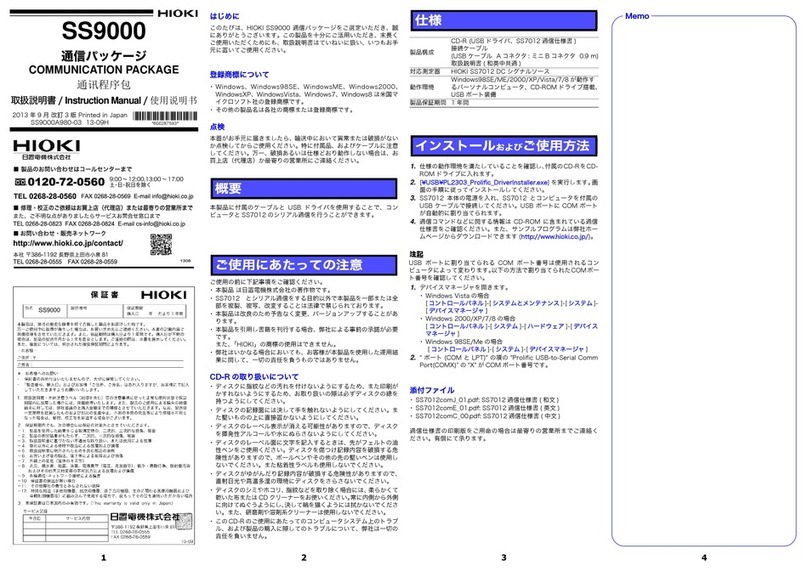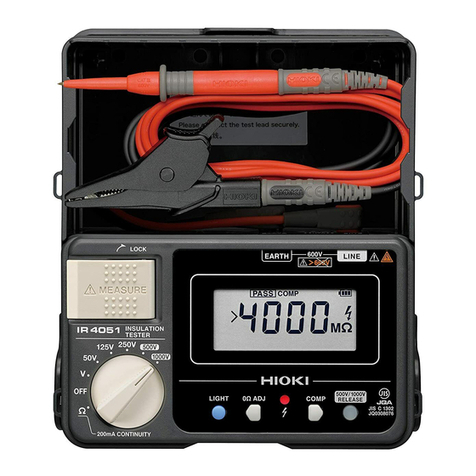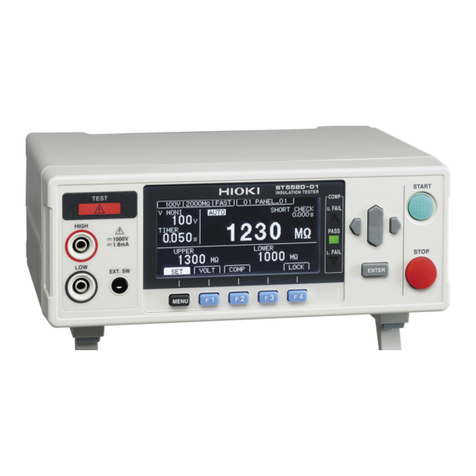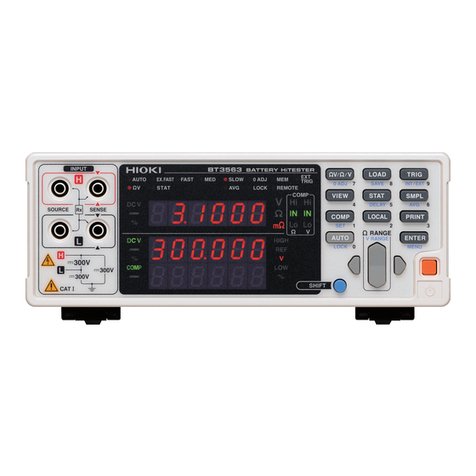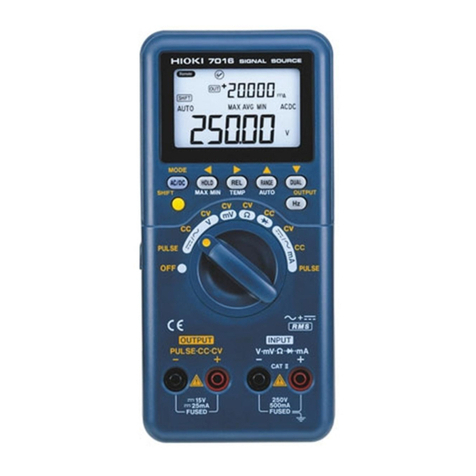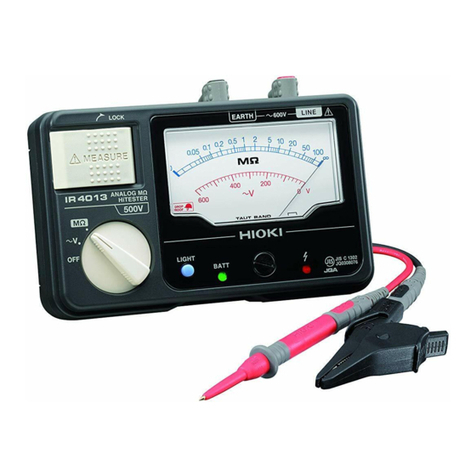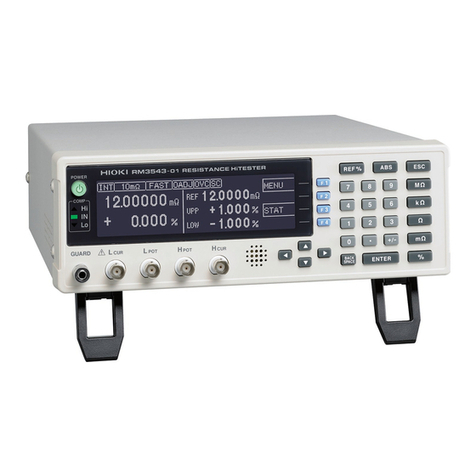
Options
The following options are available for the IR4000 series. Ask
your authorized Hioki distributor or reseller when ordering.
* L9787 Test Lead, L9788-10 Test Lead with Remote Switch (Red) and
L9788-11TestLead Setwith Remote Switchare allexclusively designed
for the HIOKI IR4000 series. Do not use for any other purpose.
Options
□L9787 Test Lead * (1.2 m)
□L9787-91 Breaker Pin
(Pin length 70 mm and 48 mm from the tip has
width 2.5 mm. The rest have width 3.8 mm.)
Breaker pin for model L9787.
□L9788-10 Test Lead with Remote Switch
(Red) * (1.2 m)
Test lead with MEASURE key for the line side
measurement. Measurement can be started by
pressing the key. There is a light at the tip which
can be switched on by pressing the LIGHT key
on the IR4000 Series. Earth side lead is not
attached.
□L9788-11 Test Lead Set with Remote
Switch *
Set of the model L9788-10 and L9787 with an
EARTH side lead.
□L9788-90 Tip Pin
Replacement Tip Pin for model L9788-10.
□L9788-92 Breaker Pin
(Pin length 123 mm and 65 mm from the tip has
width 2.6 mm.)
Breaker pin for model L9788-10.
□9804-02 Magnetic Adapter
(Ø11 mm Corresponding standard screw: M6
Button head screw)
Adaptor for connecting a Test lead to the round
head screw by means of magnetism. The tip of
adaptor is a concave shape in order to fit the
round head screw. Put an adaptor on the tip of
the earth side lead of a L9787 Test Lead or
L9788-01 Complete Test Lead.



